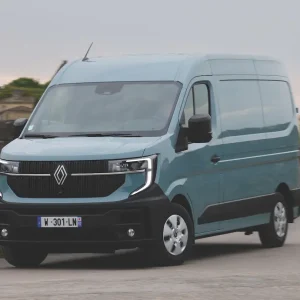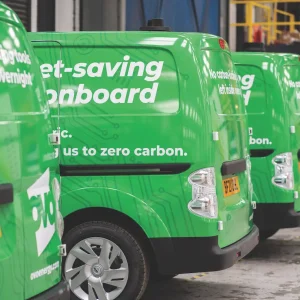In a sector increasingly populated by ‘lifestyle’ pickups, you could be forgiven for thinking that manufacturers had abandoned the working pick-up sector, and indeed some have, but not Isuzu. In the UK Isuzu took a huge gamble when it deleted the Trooper 4X4 Commercial – itself a true workhorse in an increasingly bling-laden sector – to concentrate on the TF pick-up. Basic and low-powered it answered its critics with hard work and held the fort well until the advent of the D-Max. This model reinforced the TF’s working credentials and redressed all its flaws. Isuzu was back.
Since then continual improvements to cab comfort and equipment levels have been achieved without any dilution of the work ethic. No other pick-up has managed to do that quite as well as the D-Max. Big numbers confirm D-Max prowess. The GVM is 3,000 to 3,100kgs with an impressive 3,500kg towing capacity, inside a GTM of 6,000kg, so fully laden it can still tow 2,900kg. Payload is a minimum 1,070kg in the double-cab with automatic transmission rising to 1,205kg for the single-cab in either four or two-wheel drive variants, although the payoff is that the cheaper 4×2 version can only tow 2,500kg at the most.
Cab type obviously affects the load bed dimensions, but here too the D-Max stands up to any comparison. The single-cab offers a load length of 2,315mm, with 1,805mm being available in the extended-cab version and finally 1,495mm for the double-cab models. All versions sit on a 3,125mm wheelbase with an overall length of 5.3m, a width of 1.87m and a height of 1.79m. Nowhere in the LCV world is the compromise between load dimensions, occupants’ space and manoeuvrability more vivid than in the 4WD pick-up, and the D-Max walks the dimensional tightrope perfectly. Always a small player in the UK LCV sector, it’s easy to forget that Isuzu is huge on global markets and totally dominates the pick-up sector in the East Asia – where the double-cab pick as an entity is king.
For off-road use its decent approach angle of 30º, is tempered with departure and ramp angles both being a moderate 22º, but ground clearance under the rear axle is 225mm and standard versions are shod with 245/70R 16 tyres, generally in BF Goodrich All-Terrain pattern.
Although Isuzu has offered myriad D-Max special editions and options for more arduous off-road exploits, the basic extended-cab 4X4 takes some beating as an all-rounder. This is because you can flip-up the rear seats to provide masses of storage, and the extended cab offers a nominal six-feet of load bay and pleasing truck-cab styling due to its hidden rear doors.
The 1,898cc turbo diesel puts 164hp and 360Nm of torque through a six-speed manual transmission to the rear wheels with selectable 4WD in high, or 2.3:1 reduction low ranges. Its simple rotary selector is backed by a strong electronic Hill Descent Control, giving excellent low-speed manners for negotiating tough off-road terrain. In high range for the road a deep reduction 4.3:1 final drive ratio makes first gear a true crawler ratio, whilst sixth gear offers 33mph per 1,000 revs putting 60mph at just 1,800 rpm, which bodes well for towing.
The low-geared steering is light and accurate, with firm brakes and a good driving position overall. The D-Max is a true workhorse, which puts mpg ahead of hp and hasn’t forgotten what a pick-up should offer.
Highly Commended: Toyota Hilux

Hoover, Biro, Jeep. Sometimes a brand or model type just gets taken into common vocabulary as a generic nomenclature. Surely the same could be applied to the Hilux.
In many parts of the world it doesn’t just head the market, or lead the sector it is the pick-up per se. In the UK’s small pick-up pond, this big fish offers one-tonne payloads, 3.5t towing capacities, over 200hp, auto ‘box option and basic to luxury trim levels. It’s backed by a massive and thoroughly deserved reliability reputation, a true heritage and expertise in the class and a widespread dealer network.
The Hilux, is good to drive too, particularly in 2.8L automatic guise, with good levels of standard equipment and a spacious interior. Only the lack of a mid-cab option in the UK, keeps it off the top spot.





